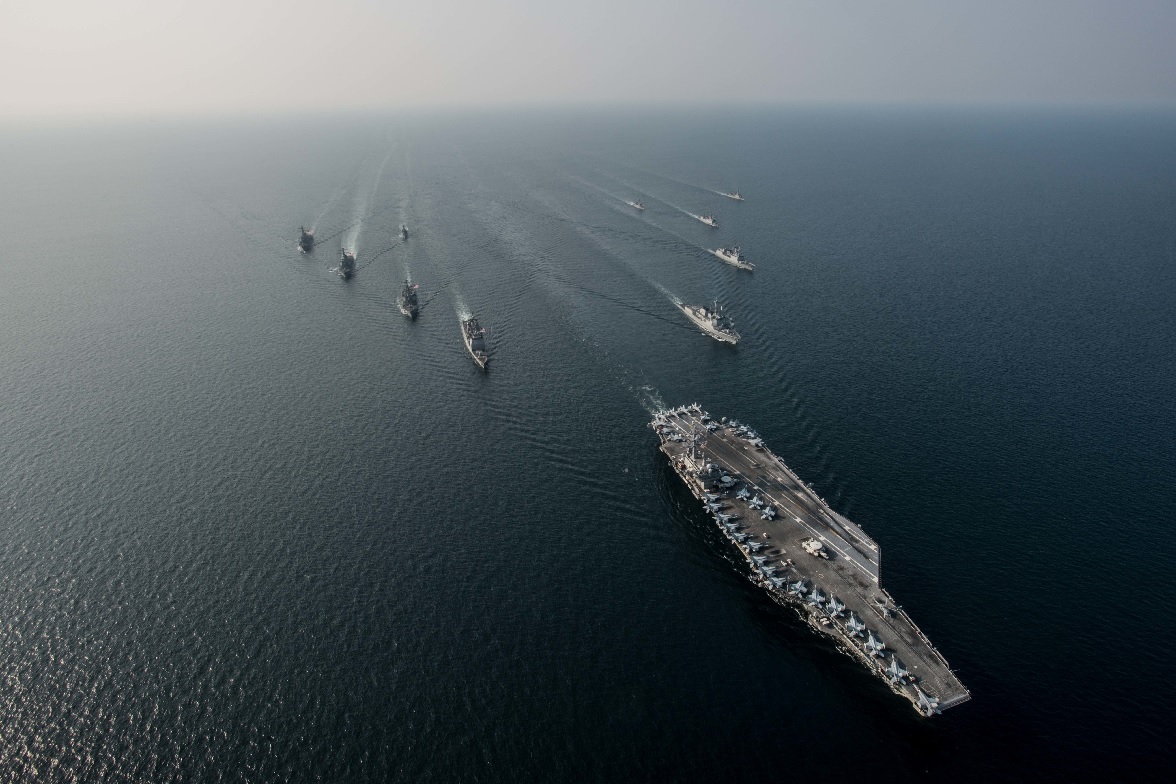The 2-carrier contract would be a very bad news for China: the Gerald R. Ford-class in fact is designed to maximize the striking power of the embarked carrier air wing
On Dec. 31, 2018, the Pentagon formally notified Congress that it wanted to pursue the first dual-carrier contract since the late 1980s.
The U.S. Navy has been actively pursuing the contracting strategy for the past nine months, saying it had the potential to save as much as $2.5 billion in the deal and more recently stating the deal would save even more than that. Newport News Shipbuilding too said it wanted the deal, but the Pentagon didn’t sign off on it until the Dec. 31 letter to lawmakers.
On Monday the Pentagon sent a certification letter to Congress that outlines the contracting strategy and how much time and money it would allow the Navy to save on hulls CVN-80 and CVN-81. A congressional staffer told USNI News that the combined contracting could save the Navy about $4 billion, well above the original estimates.
With that letter sent, the Navy could award the contract by the end of January.

A Navy spokesman told USNI News that “the Navy has reached a price agreement with Huntington Ingalls Industries’ Newport News Shipbuilding for a two-carrier buy of CVN-80 and 81. Further information will be available upon contract award.”
Sen. Tim Kaine (D-Va.), a Senate Armed Services Committee member and a proponent of the two-carrier buy from the Virginia-based Newport News Shipbuilding yard, said in a Dec. 31 statement that “This smart move will save taxpayer dollars and help ensure the shipyards can maintain a skilled workforce to get the job done. Newport News builds the finest carriers in the world, and I know they are ready to handle this increase in work as we make progress toward the Navy’s goal of a 355-ship fleet.”
The 2-carrier contract would be a piece of very bad news for China: as we have recently reported in fact Rear Admiral Lou Yuan, deputy head of the Chinese Academy of Military Sciences, has told an audience in Shenzhen that the ongoing disputes over the ownership of the East and South China Seas could be resolved by sinking two U.S. Navy aircraft carriers.
The high-profile, hawkish military commentator in fact reportedly declared the current trade spat was “definitely not simply friction over economics and trade,” but was instead a “prime strategic issue”.
His speech, delivered on Dec. 20 to the 2018 Military Industry List summit, declared that China’s new and highly capable anti-ship ballistic and cruise missiles were more than capable of hitting U.S. Navy carriers, despite them being at the center of a ‘bubble’ of defensive escorts.
“What the United States fears the most is taking casualties,” Admiral Lou claimed.
Yuan said the loss of one super carrier would cost the U.S. the lives of 5000 servicemen and women. Sinking two would double that toll.
CVN-80 (which has already been named Enterprise) and 81 are part of the next generation of an aircraft carrier, the Gerald R. Ford-class. The lead ship, the Gerald R. Ford-class (CVN 78), was ordered in September 2008 as the force structure replacement for USS Enterprise (CVN 65), which inactivated in 2012.
The Gerald R. Ford class is designed to maximize the striking power of the embarked carrier air wing. The ship’s systems and configuration are optimized to maximize the sortie generation rate (SGR) of attached strike aircraft, resulting in a 33 percent increase in SGR over the Nimitz- class.
Photo by Dod and U.S. Navy

